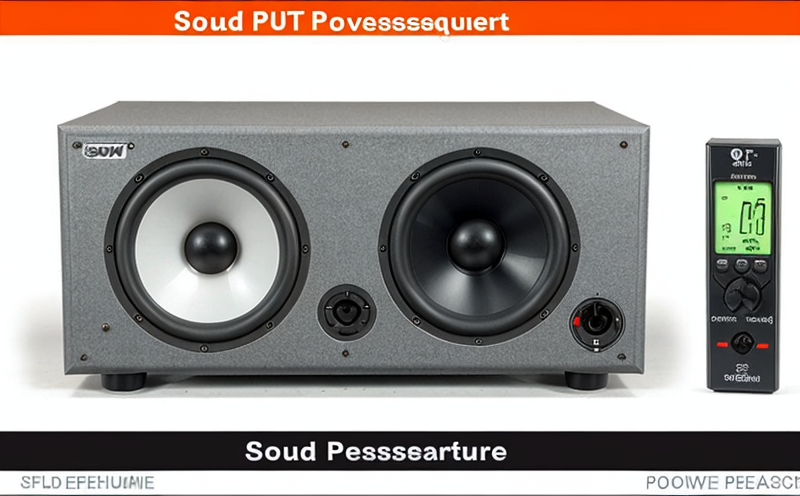ISO 11205 Determination of Emission Sound Pressure Levels (Survey Method)
The determination of emission sound pressure levels is a critical aspect in ensuring compliance with noise regulations and standards. This ISO method, specifically ISO 11205, provides a standardized approach for measuring the sound pressure levels emitted by various sources such as machinery, vehicles, and structures. The survey method outlined in this standard enables accurate measurement of sound emissions over a specified area or volume.
The primary application of ISO 11205 is to quantify noise pollution from industrial processes, construction sites, and transportation facilities. This information is invaluable for environmental impact assessments (EIAs), compliance monitoring, and the development of noise control strategies. The method ensures that all measurements are conducted under controlled conditions, thus providing reliable data that can be used in decision-making processes.
One of the key advantages of using ISO 11205 is its versatility; it allows for both continuous and periodic measurement of sound levels, making it suitable for a wide range of applications. This flexibility means that laboratories equipped with this capability can offer comprehensive noise testing services tailored to specific needs. The survey method also supports the identification of sources contributing most significantly to overall sound emissions, which is essential for prioritizing control measures.
The accuracy and reliability of ISO 11205 measurements are enhanced by precise instrumentation and careful experimental design. Proper setup involves defining the area or volume being surveyed, selecting appropriate microphone locations based on the source characteristics, and ensuring that background noise does not interfere with readings. Once these parameters are established, continuous monitoring can be conducted over a defined period to capture representative data.
Understanding the context of acoustics within this service helps clients appreciate its importance in maintaining regulatory compliance while promoting healthier working environments. By employing ISO 11205 techniques, organizations demonstrate their commitment to reducing noise pollution and protecting public health—a growing priority globally due to increasing awareness about environmental issues.
| Parameter | Description |
|---|---|
| Measurement Location | The precise spot where sound pressure level measurements are taken. For effective surveys, multiple locations may be necessary depending on the source type and geometry. |
| Microphone Specifications | High-quality microphones with flat frequency response ensure accurate measurement of all relevant frequencies in the spectrum. |
| Data Recording | Continuous recording ensures that transient events are captured, providing a complete picture of sound emission characteristics over time. |
| Environmental Conditions | Temperature, humidity, and wind speed must be recorded alongside sound pressure level measurements to account for potential environmental effects. |
In summary, ISO 11205 provides a robust framework for determining emission sound pressure levels using the survey method. Its wide applicability across various industries makes it an essential tool in any comprehensive noise management program.
Applied Standards
- ISO 11205:2009: Determination of emission sound pressure levels (survey method)
- ASTM E473-18a: Standard Test Method for Sound Power and A-weighted Sound Pressure Levels from Noise Sources in Enclosures
- EN ISO 1996-2:2012: Acoustics - Determination of sound power levels by means of sound pressure measurements using octave-band analysis
The application of these standards ensures that all measurements adhere to internationally recognized guidelines, enhancing the credibility and reliability of results. Compliance with such standards is crucial for maintaining consistency across different testing facilities and jurisdictions.
Scope and Methodology
- Setup: Define the survey area, place microphones at strategic locations, calibrate instruments according to manufacturer specifications.
- Data Collection: Conduct continuous measurements over specified periods, ensuring accurate recording of all relevant parameters.
- Analysis: Use specialized software to process collected data, applying necessary corrections for environmental factors and instrument calibration.
For a detailed understanding of how ISO 11205 applies in practice, consider the following example:
A manufacturing facility wants to comply with local noise regulations by determining sound pressure levels emitted during operations. Using ISO 11205, they define a survey area around machinery, place microphones at critical points, and begin continuous measurement sessions. After collecting sufficient data, they analyze it using appropriate software, accounting for any external influences like wind or temperature fluctuations.
The resulting sound pressure levels are then compared against regulatory limits to assess compliance. If necessary adjustments are required, further surveys can be conducted until acceptable levels are achieved.
| Parameter | Description |
|---|---|
| Survey Area | The total area encompassed by the measurement setup, typically defined based on the dimensions and geometry of the source. |
| Microphone Placement | Strategic positioning ensures that all significant sound emission points are captured accurately. |
| Data Processing | Involves applying corrections for instrument calibration, background noise reduction, and environmental factor adjustments. |
This structured approach guarantees reliable and repeatable results, supporting informed decision-making processes regarding noise control strategies.
Environmental and Sustainability Contributions
- Emission Reduction: By accurately measuring sound emissions, organizations can identify sources contributing most to overall pollution. This knowledge enables targeted interventions aimed at minimizing these contributions.
- Compliance Verification: Ensuring adherence to environmental regulations helps protect natural habitats and human health from excessive noise exposure.
The use of ISO 11205 not only supports regulatory compliance but also promotes sustainable practices by fostering a culture of continuous improvement in noise management. Organizations adopting these methods contribute positively to both local communities and global sustainability goals.





